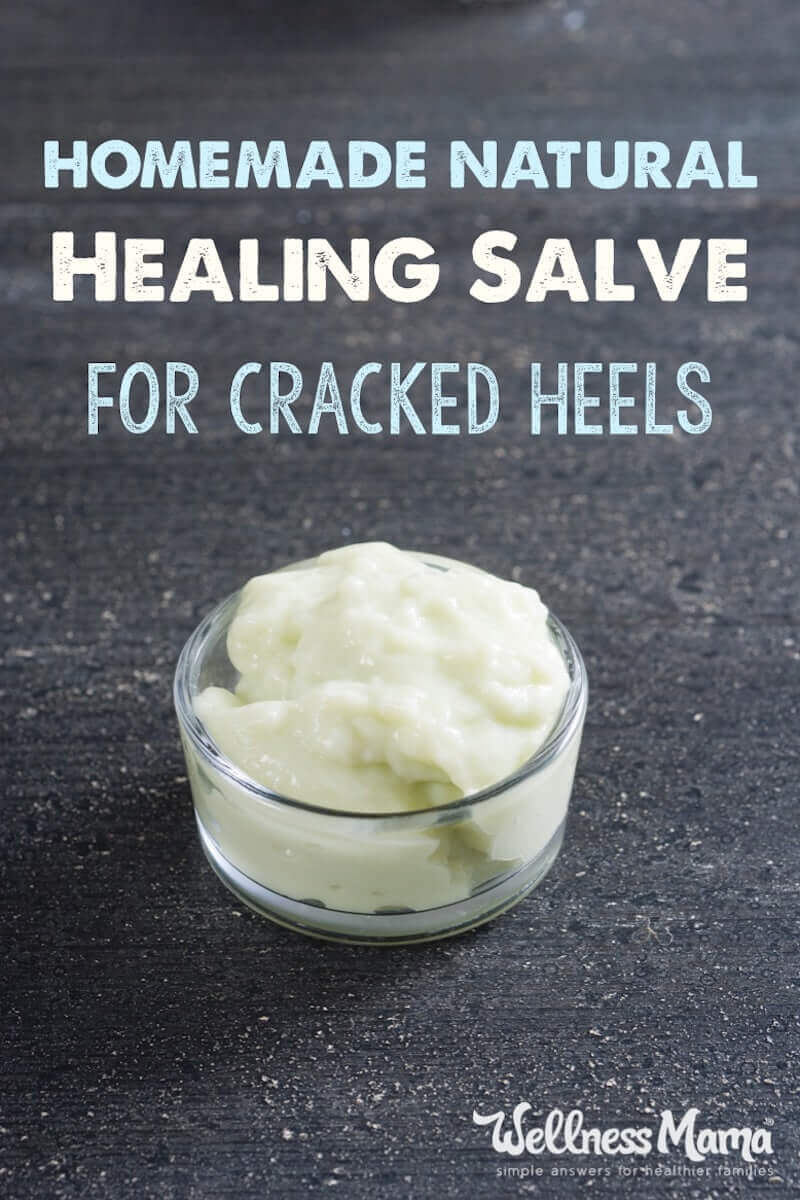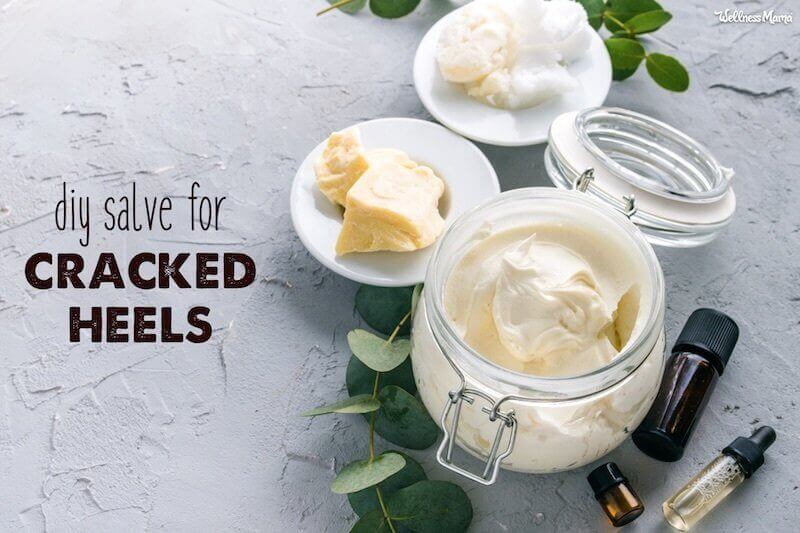When I married my husband, he had horribly cracked heels. Apparently, he’d had these most of his life, but as we learned more about natural living, I set out to find natural remedies for it. In the summertime especially, when feet are more exposed (hopefully barefoot or in minimalist shoes), cracked heels can be a problem.
Beyond appearance, cracked heels can be really uncomfortable and can mean anything from minor discomfort to pain and bleeding. My husband and I met walking across the country (true story!) and cracked heels (let alone blisters, shin splints, and other ailments) were our constant companions, so we have a little experience with this.
Why Do I Have Cracked Heels?
Cracked heels can be the result of several things:
- the way a person walks
- poor circulation
- a skin problem like eczema or psoriasis
- fungal infection
- nutritional deficiencies, especially omega-3 or zinc deficiency
It’s not something we think about every day, but feet do need special care just like other parts of our body… if not more, because they work harder!
Let’s see how to size up the situation.
Cracked Heels: The Cure Fits the Cause
Since cracked heels have a variety of causes, it is important to find the root of the problem.
The condition of skin often reflects internal health (or problems). Deficiencies of zinc, magnesium, and omega-3 can contribute to chronically cracked heels. I’ve seen this condition improve with dietary changes, such as adding fat-soluble vitamins and getting gelatin in the diet.
Personally, we take omega-3 supplements daily and make it a point to consume wild-caught fish to maintain omega-3 levels. Since zinc is important for men’s health, my husband also takes a zinc supplement regularly.
Externally, cracked heel causes can include skin conditions or fungal infections. Often these can be helped with regular detoxifying foot soaks or a concentrated salve.
As a general rule, I suggest trying any remedy for at least a few weeks to see if it is working. For best results, try external and internal approaches at the same time.
Cracked Heel Remedy #1: Diet
- Consume enough zinc, magnesium, and omega-3s in food or supplement form
- Consume gelatin and vitamin C (which increases skin elasticity) to help reduce cracking
- Optimize fat-soluble vitamins like vitamin D and vitamin K (found in grass-fed butter or supplements)
- Consume foods like bone broth and organ meats
- Drink more water and increase intake of trace minerals
Cracked Heel Remedy #2: A Little TLC
- Exfoliate with a natural pumice stone or Ped Egg (looks like a cheese grater but it works)
- Soak in detoxifying food baths or regular detox baths (here are my three favorite recipes)
- Add ½ cup of apple cider vinegar to a warm foot soak
- Use magnesium oil on the feet before bed
- Use a homemade nourishing foot salve (see below) each morning and night
- Exfoliate feet in the shower with natural foot scrub like my homemade peppermint magnesium foot scrub
The Recipe: DIY Foot Salve for Cracked Heels
Ingredients:
- ¼ cup shea butter
- ¼ cup coconut oil
- 3 TBSP beeswax
- ¼ cup magnesium flakes + 2 TBSP boiling water (or ¼ cup of pre-made magnesium oil, though this won’t yield as much magnesium in the final product)
- 10 drops oregano essential oil (Not for use during pregnancy or on children.)
- 10 drops peppermint essential oil
Instructions:
- Pour 2 tablespoons of boiling water into the magnesium flakes in a small container and stir until dissolved. This will create a thick liquid. Set aside to cool.
- Set a quart-size mason jar inside a small pan with 1 inch of water. Add the coconut oil, beeswax, and shea butter to the jar. Melt slowly over medium heat, stirring occasionally.
- When melted, remove the jar from the pan and let the mixture cool until room temperature and slightly opaque. At this point, put into a medium bowl or into a blender.
- If in a bowl, use a hand blender or immersion blender on medium speed and start blending the oil mixture.
- Slowly (starting with a drop at a time) add the dissolved magnesium mixture to the oil mixture while continuing to blend. Continue until all of the magnesium mix is added and it is well mixed.
- Add the oregano and peppermint essential oils (if using) and whip until combined.
- Put in the fridge for 15 minutes and re-blend to get body butter consistency.
- Store in fridge for best consistency (and a cooling lotion feel), or at room temperature for up to two months.
To Use:
Apply the salve to cracked heels at night.
For best results, a few steps are needed:
- Exfoliate feet while dry, using the pumice or Ped Egg.
- Do a detoxifying foot soak. Let skin dry fully.
- Apply a thick coat of salve. Wear socks to bed to keep salve where it’s needed (and to keep sheets clean).
- Repeat as needed until problem resolves!
Note: Do not use oregano or peppermint essential oils on children or while pregnant. As with any medical condition, check with a doctor if things don’t improve or if you have any specific concerns.
That’s it! Show your nails some TLC and you have a pair of beautiful and healthy feet ready for summer!
Do you have cracked heels? What natural remedies have you tried? Share below!





Leave a Reply